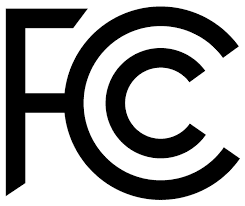The Ultimate Guide to FCC Certification: Everything You Need to Know

In an age where wireless technology powers nearly every facet of life—from smartphones and laptops to IoT devices and industrial automation—regulatory compliance is more than a legal formality. It's a necessity. At the forefront of this regulatory framework in the United States is the Federal Communications Commission (FCC). Obtaining FCC certification is a vital step for manufacturers and importers to ensure their electronic devices are safe, reliable, and free from harmful interference.
In this comprehensive article, we’ll explore what FCC certification is, why it’s necessary, who needs it, the different types, the certification process, and how to ensure your products are fully compliant.
What is FCC Certification?
FCC certification is a mandatory authorization process governed by the Federal Communications Commission, designed to ensure that electronic and radio frequency (RF) emitting devices comply with U.S. electromagnetic interference (EMI) and safety standards.
The main goal is to prevent devices from emitting RF signals that could interfere with other devices or critical communication systems such as aviation, military, or emergency services.
Why is FCC Certification Important?
-
Legal Compliance
It is illegal to market, sell, or distribute RF devices in the United States without proper FCC authorization. -
Market Access
FCC certification grants you access to the massive U.S. electronics market, ensuring your device can be legally sold and operated. -
Consumer Trust
Products with FCC certification are perceived as safer and more reliable, increasing consumer confidence. -
Interference Protection
It ensures that your device won’t interfere with other important technologies like GPS, Wi-Fi, and cellular networks.
Who Needs FCC Certification?
Any company or individual that manufactures, imports, or sells electronic devices that emit radio frequencies in the U.S. must comply with FCC regulations. This includes:
-
Smartphones, tablets, and laptops
-
Wireless routers and Bluetooth devices
-
IoT gadgets
-
RFID systems
-
Industrial automation devices
-
Drones and remote controls
-
Smart home products
Even non-intentional RF emitters, such as digital cameras and power supplies, may need to be tested under FCC rules.
Types of FCC Authorization
There are three main types of FCC compliance pathways:
1. Supplier’s Declaration of Conformity (SDoC)
Used for low-risk, unintentional radiators like digital devices and power adapters. Manufacturers perform testing themselves or through accredited labs and retain records.
2. Certification
This is the most rigorous process, typically for intentional radiators like Bluetooth or Wi-Fi devices. It requires testing at an FCC-recognized lab and submission of reports to a Telecommunication Certification Body (TCB) for approval.
3. Verification (Obsolete as of 2017)
This was merged with SDoC to streamline processes.
The FCC Certification Process
Here is a step-by-step breakdown of the FCC certification process:
Step 1: Product Classification
Determine whether your product is an intentional radiator, unintentional radiator, or exempt. This defines your required compliance path.
Step 2: Testing
Send the product to an FCC-accredited testing laboratory to assess compliance with relevant FCC Part Rules (such as Part 15 for wireless devices).
Step 3: Documentation
Compile test results, product specifications, schematics, user manuals, and RF exposure assessments (if applicable).
Step 4: Certification Submission
Submit your data to a Telecommunication Certification Body (TCB). If approved, the TCB will issue a Grant of Equipment Authorization.
Step 5: Labeling and Identification
Label your product with the appropriate FCC ID, include it in the user manual, and ensure all packaging materials comply with FCC rules.
FCC Labeling Requirements
Products that pass certification must include:
-
FCC ID Number (e.g., FCC ID: 2ABCD-XYZ123)
-
Compliance Statement: “This device complies with part 15 of the FCC Rules…”
-
Proper placement and legibility on the product casing or user manual
Key FCC Rules and Parts
Here are some common FCC regulation parts relevant to wireless and electronic devices:
-
Part 15: Radio Frequency Devices (most common)
-
Part 18: Industrial, Scientific, and Medical Equipment
-
Part 22/24/27: Cellular Communication Devices
-
Part 68: Telecommunications Terminal Equipment
Understanding the applicable part is essential for successful testing and documentation.
Penalties for Non-Compliance
Selling non-compliant devices in the U.S. can result in:
-
Product recalls
-
Fines (up to $150,000 per violation)
-
Legal action and brand damage
-
Confiscation of equipment by customs or the FCC
Therefore, skipping certification is a significant risk to your business.
Tips for Successful FCC Certification
-
Work with Accredited Labs: Always test with FCC-recognized facilities.
-
Prepare Accurate Documentation: Incomplete or inaccurate data can delay or void your certification.
-
Use Pre-certified Modules: If your device integrates a pre-certified wireless module, your process may be simpler.
-
Engage Early: Involve regulatory consultants during the product design phase to avoid costly redesigns.
-
Stay Updated: FCC rules can evolve. Monitor the FCC website or work with regulatory experts.
Conclusion
FCC certification isn’t just a box to check—it’s a vital part of product development that ensures your device is safe, compliant, and market-ready. By understanding the certification pathways, testing processes, and legal requirements, manufacturers and importers can confidently enter the U.S. market while avoiding compliance pitfalls.
Whether you're launching a new IoT device, a Bluetooth-enabled wearable, or a home automation product, investing time and resources into FCC certification will safeguard your brand, ensure smoother market entry, and build trust with consumers and regulators alike.






